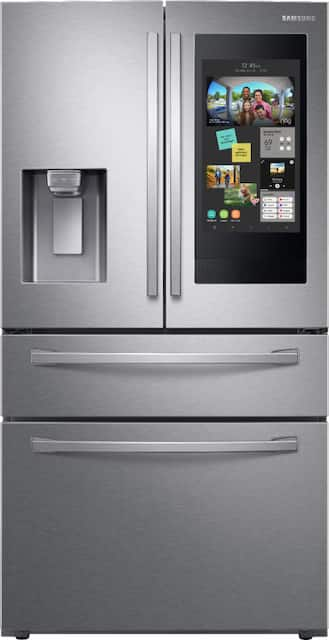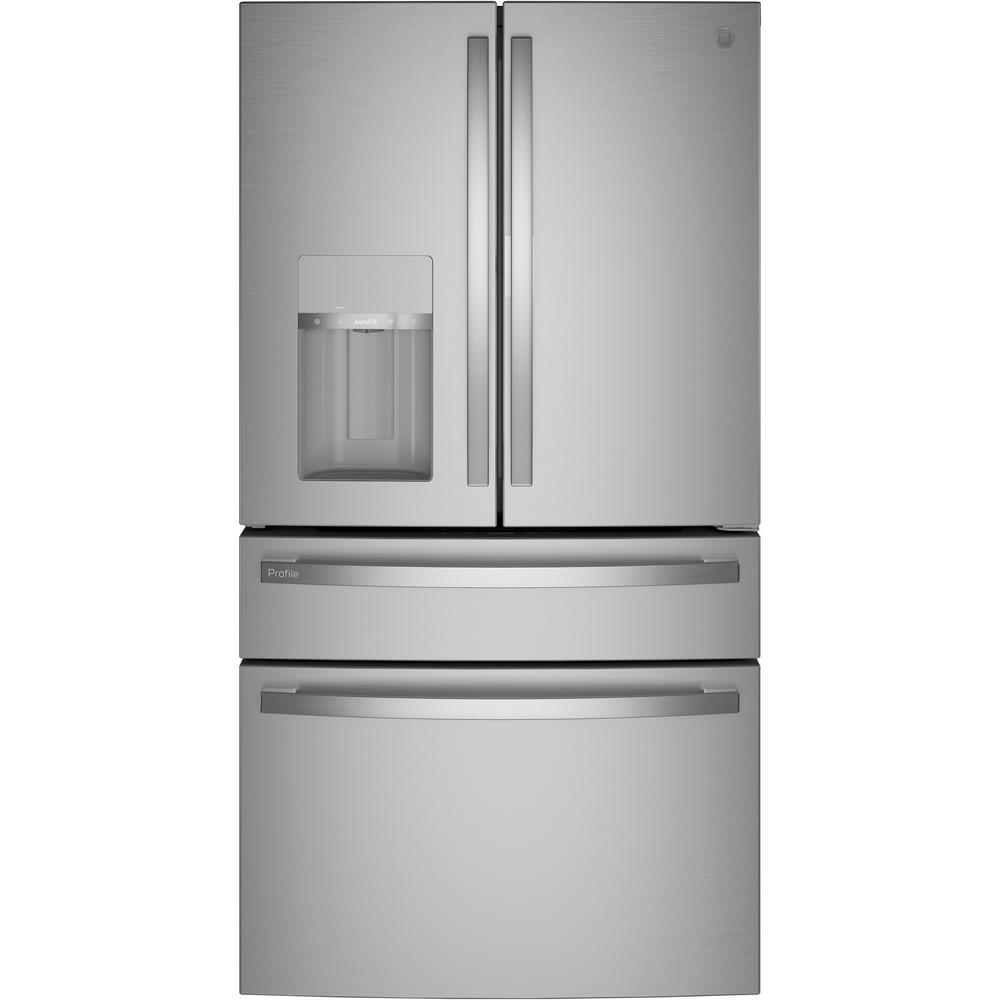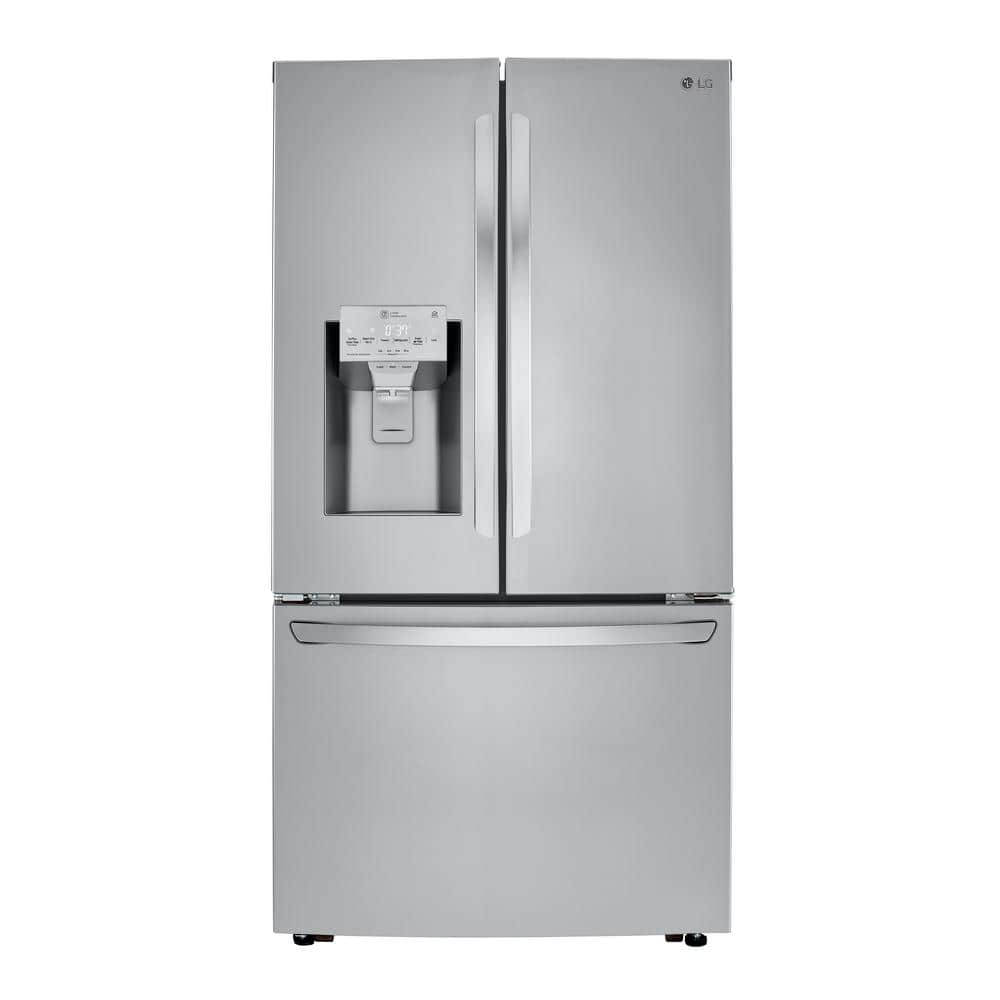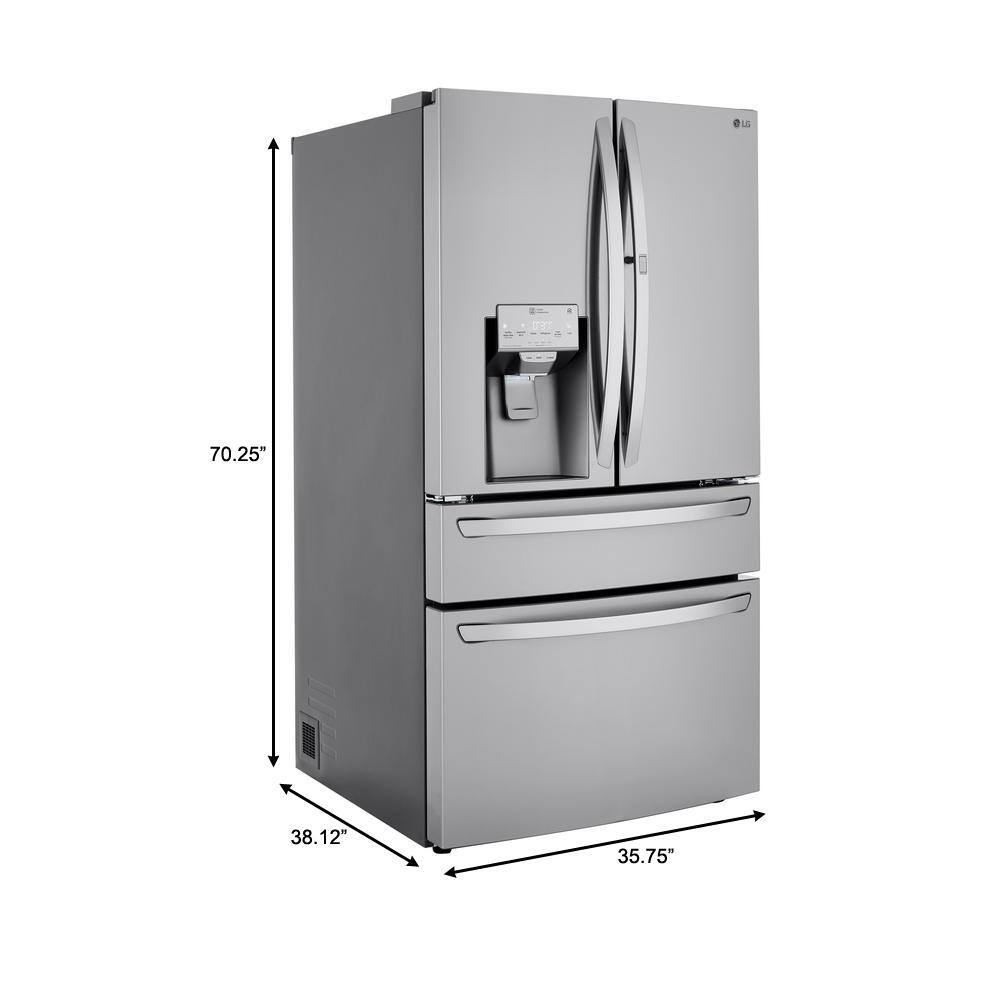FlexZone drawer
A flexible storage drawer with four different temperature settings and an adjustable Smart Divider to stay organized.
Metal cooling
The stainless steel paneling helps maintain consistent temperature throughout the refrigerator.
Twin Cooling Plus®
Near-commercial grade humidity levels, helps prevent spoiling and freezer burn.
Ice Max
Large capacity, stores up to 4.2 lbs. of ice.
Fingerprint resistant finish
A special finish to reduce smudges and minimize cleaning.
Wi-Fi and Bixby enabled
Use your smartphone to control the temperature and monitor your refrigerator remotely.
Adjustable shelves
Adjustable shelves go from standard to slide-in or flip-up, to store tall items with ease.
High-efficiency LED lighting
LED lighting designed to beautifully light up the interior of your fridge so you’re able to quickly spot what you want.
ENERGY STAR® Certified
Eco-friendly and energy-efficient.
Food
See inside your refrigerator from anywhere, with 3 built-in cameras.
Family
Create your custom home screen with Family Board, by adding personalized pictures, stickers and handwritten notes.
Fun
Stream your favorite music service directly on your Family Hub screen.
Your home
Access your smart devices and Samsung appliances from your Family Hub screen; set lights, hear and speak to someone at your front door, monitor your baby’s room and receive laundry end of cycle notifications.
Bixby Voice 2.0
Intelligent voice assistant allows hands free navigation and recognizes user’s voice in order to provide a personalized experience.
Access your smart device
Mirror your Samsung TV or Samsung phone and answer calls hands free directly from your Family Hub.
Organize your food
Create and share shopping lists, plan meals based on the food inside your refrigerator and automatically set expiration dates.
Stay connected
Send photos and notes to your Family Hub from your mobile device.
Order food from Grubhub
Order your favorite food from Grubhub right from your Family Hub screen.
Customize your screen saver
Customize your screen saver with a picture slide show, weather and animations.
Manage your family’s calendars
View and manage your family’s calendars and events right from your Family Hub screen.






by Luis
I like the space and all the new technology that comes with. Totally recommended.
by Jessica
The perfect refrigerator. The way you’re able to customize the hub is amazing.
by Evie
Wonderful, Beautiful, I love it! Would definitely recommend this fridge.
by Imeh
Product is smart and very efficient. The ability to connect it to IoT is also impressive.
by Tawan
I love the fridge and all it’s bells and whistles. It makes shopping and food planning a lot easier. It’s a winner.
by Ivan
It’s the top of the line Samsung? Only the best. Eye catcher.